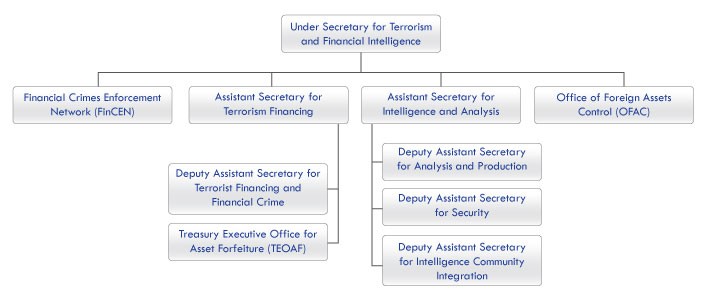Background and History of the Financial Management Service of the Treasury
Post on: 12 Май, 2015 No Comment

Background and History of the Financial Management Service
The Financial Management Service is one of Treasury’s newer major bureaus, having been established as the Bureau of Government Financial Operations in 1974. FMS manages the U.S. government’s disbursement and collection systems, provides central accounting and financial reporting for government as a whole, and provides guidance to federal program agencies in cash management, credit administration, debt collection, accounting systems, investment management, and the use of technology in financial activities.
It may seem surprising that an organization that performs so many essential functions took so long to come into existence, but bear in mind that America did not begin with more than 300 million citizens and a federal budget of more than $3 trillion. The evolution of FMS and its predecessor organizations must be seen in the context of the growth and ever increasing complexity of America’s financial system over the course of more than two centuries.
The U.S. Department of the Treasury was created by an Act of Congress on Sept. 2, 1789. The Congress directed the Treasury to provide for the collection, safeguarding, and disbursement of public money, and to maintain a system to account for the government’s collections and payments. Although the collection and control of money is critical to any government, the federal financial infrastructure remained very small for more than 100 years. The Register of the Treasury originally carried out the account-keeping functions. Individual departments and independent agencies conducted most disbursing functions without Treasury oversight. By modern standards, the administration of federal finances was extremely loose, but then the federal government was much smaller than it is today, and its duties were far more limited. Other than during the relatively few major wars, the government did not collect or spend very much money, and so the need to centralize or modernize its payment, collection, or accounting systems did not exist.
The first major federal financial management reform took place just after World War I. In late 1919, Treasury Secretary Carter Glass created the forerunners of the current fiscal operations bureaus, FMS and the Bureau of Public Debt, by approving the positions of the Commissioner of Accounts and Deposits and the Commissioner of the Public Debt. The officials appointed to these positions oversaw the various organizations that comprised the new Bureau of Accounts and Deposits (later renamed the Bureau of Accounts) and the Bureau of the Public Debt. The former of these two bureaus was the first direct ancestor of today’s Financial Management Service.
Although the predecessors of today’s Fiscal Service organizations were established in 1919, most federal payment functions remained decentralized until 1933. That year, President Franklin D. Roosevelt issued an executive order mandating the transfer of the Executive Departments’ disbursing clerks to the newly established Division of Disbursement, which was assigned to the Bureau of Accounts. One result of this order was the creation of Regional Disbursing Offices. Eventually, 27 of these facilities were established to handle the ever increasing number of checks issued by the government. Today, thanks to improved technology and the gradual replacement of checks by Electronic Funds Transfer, FMS maintains only four payment sites.
In June 1940, Congress approved a reorganization plan that created the Treasury Department’s Fiscal Service and a career Fiscal Assistant Secretary position. Under the plan, the Fiscal Service was assigned three components: the Bureau of Accounts, the Bureau of the Public Debt, and the Office of the Treasurer of the United States. There evidently was considerable bureaucratic inertia, since while the Fiscal Service was established in 1940, yet the first Fiscal Assistant Secretary was not appointed until 1945.
A new era began in January 1974 when a Fiscal Service reorganization plan established the Bureau of Government Financial Operations (BGFO) and merged all of the Bureau of Accounts’ functions under the new bureau. BGFO also assumed most functions of the Office of the Treasurer, except those performed by the now defunct Cash Division. In all but name, this reorganization effectively created FMS.
On Oct. 10, 1984, BGFO was renamed FMS. Treasury Fiscal Assistant Secretary Carole Jones Dineen explained the reasoning behind the change in name: Financial Management Service reflects the bureau’s new emphasis on achieving greater efficiency and economy in government financial management. Through the application of sound cash management practices and increased utilization of automated payments, collections, and accounting and reporting systems, the old Bureau of Government Financial Operations is evolving from the government’s ‘bookkeeper’ into the government’s central financial manager.
Since 1984, FMS has done its utmost to follow this dictum. The old image of men with quill pens hunched over thick, musty registers no longer applies. FMS strives to continually improve the government’s performance by managing the financial infrastructure in support of federal agencies. The Service employs many advanced technologies that were either in their infancy or non-existent as recently as when BGFO was established. FMS is continuing to improve its products and services through initiatives such as Electronic Funds Transfer, the Treasury Offset Program, the Electronic Federal Tax Payment System, and various electronic commerce initiatives. FMS is proud of the progress it has made and looks forward to the future, confident that it will continue to make many positive contributions to both government financial management and the American financial services industry.
    Last Updated:  March 14, 2014














